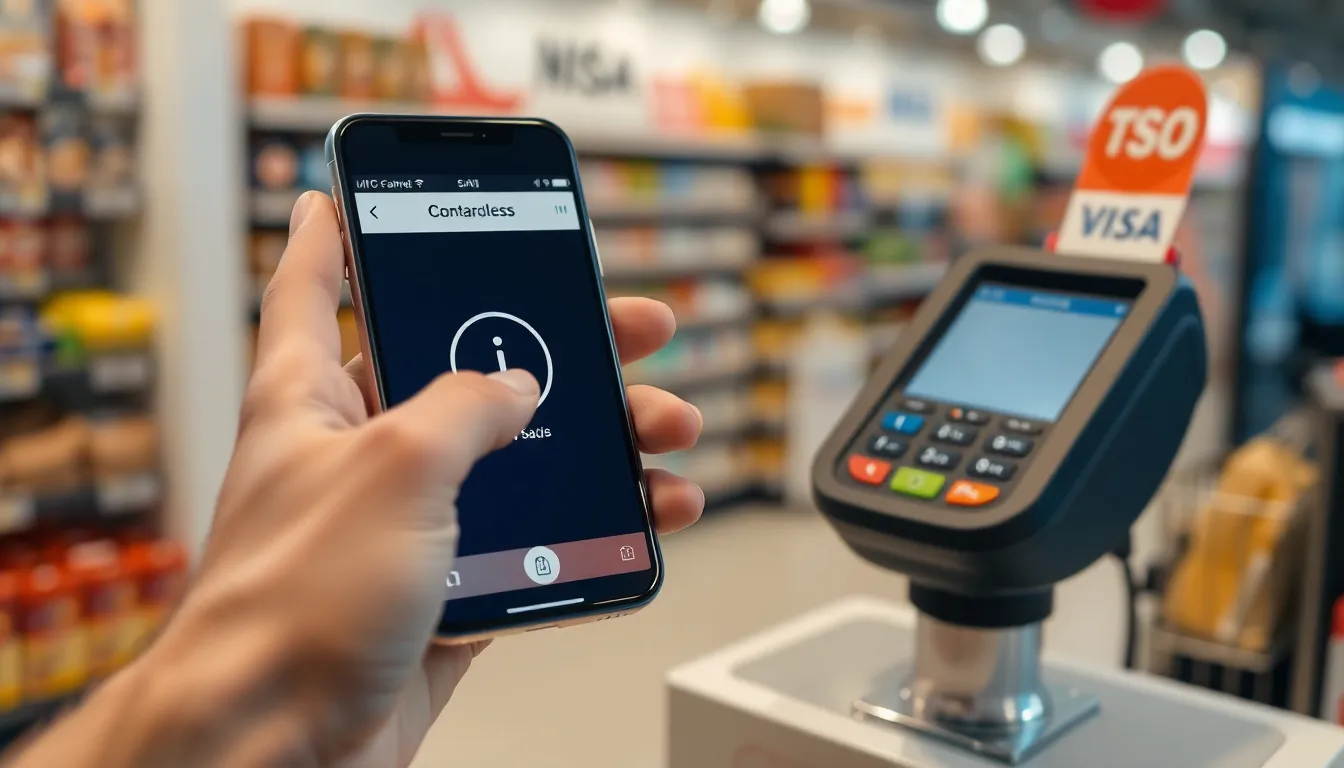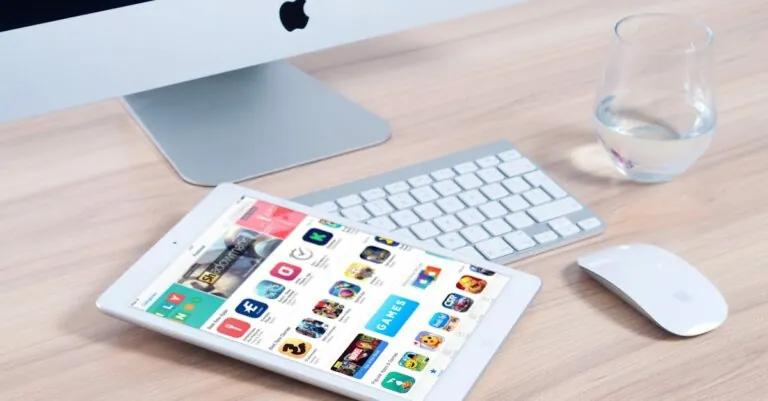In a world where carrying cash feels like a relic of the past, contactless payment solutions have swooped in like a superhero in a cape. Who needs a wallet stuffed with crumpled bills when a simple tap or wave can do the trick? It’s like magic—only without the top hat and rabbit.
These nifty technologies not only speed up transactions but also keep germs at bay. So, while your friends are fumbling with their wallets, you’ll be breezing through checkout lines, feeling like the tech-savvy champion you are. Whether it’s at your favorite coffee shop or the local grocery store, contactless payments are transforming the way people spend money. Buckle up as we dive into the world of these modern marvels and discover why they’re becoming a must-have for savvy shoppers everywhere.
Table of Contents
ToggleOverview of Contactless Payment Solutions
Contactless payment solutions refer to technologies that enable consumers to make transactions without direct physical contact. These solutions often utilize NFC (Near Field Communication) or RFID (Radio-Frequency Identification) technologies. Users simply tap their card or device against a terminal to complete a purchase, streamlining the checkout process.
A key benefit of contactless payments is their speed. Transactions typically process within seconds, significantly reducing wait times at retailers. According to a report from Statista, contactless payments represented over 30 percent of all payment methods in the United States in 2022, reflecting their growing acceptance among merchants.
These solutions enhance hygiene and promote safety. By minimizing hand-to-hand contact, they address consumer concerns about germs and maintain a sanitary shopping experience. Moreover, digital wallets like Apple Pay and Google Pay contribute to this trend, allowing users to store multiple cards securely on their smartphones.
Security remains a priority for users. Contactless payment solutions often feature encrypted data and tokenization, which protect sensitive information during transactions. Research from the Consumer Financial Protection Bureau highlights that around 70 percent of users feel secure using contactless methods, particularly emphasizing fraud prevention.
Retailers also benefit from adopting these solutions. By integrating contactless technology, businesses can attract tech-savvy customers and improve operational efficiency. A seamless checkout experience not only satisfies existing patrons but can also draw new clientele seeking modern payment options.
Overall, contactless payment solutions represent a convenient, efficient, and secure alternative to traditional cash transactions. With continuous advancements in technology, their prevalence in everyday transactions is likely to expand further.
Types of Contactless Payment Technologies

Contactless payment technologies include solutions like NFC and RFID that enable quick, secure transactions. These systems significantly enhance user experience and convenience.
Near Field Communication (NFC)
NFC technology allows users to process payments by tapping their card or smartphone near a terminal. This method requires devices to be within a few centimeters of each other, promoting secure transactions. NFC supports various payment types, including credit cards, debit cards, and mobile wallets. According to data from 2022, NFC transactions accounted for a significant portion of contactless payments in the U.S. Users appreciate the speed and ease of NFC, with transactions typically completed in seconds. Its widespread adoption stems from its incorporation in smartphones and smartwatches, making it highly accessible for consumers.
Radio Frequency Identification (RFID)
RFID technology utilizes radio waves to identify and track objects, including payment cards. This method allows for longer distances compared to NFC, enabling contactless payments without needing close proximity. RFID chips are integrated into credit and debit cards, simplifying the checkout process. Retailers benefit from reduced transaction times, enhancing customer satisfaction. In 2022, RFID saw increased usage in various sectors, particularly in retail and transportation. Efforts to improve security are ongoing, as encryption methods help protect user data during transactions. Consumers enjoy RFID’s convenience and effectiveness, further driving its growth within contactless payments.
Benefits of Contactless Payment Solutions
Contactless payment solutions offer several advantages that enhance the shopping experience. They provide an efficient way to conduct transactions without the hassle of cash or swiping cards.
Convenience and Speed
Convenience stands out as a primary benefit of contactless payments. Users complete transactions quickly by tapping their card or device against a terminal, which reduces wait times. Speed matters, especially during busy shopping hours, as many prefer swift transactions. Research indicates that contactless payments accounted for over 30 percent of all payment methods in the U.S. in 2022, emphasizing their growing popularity. Frequent shoppers appreciate not fumbling with cash or scanning cards multiple times, making the checkout process seamless. Overall, these solutions cater to the fast-paced lifestyle of modern consumers.
Enhanced Security Features
Enhanced security features play a crucial role in the appeal of contactless payment solutions. Sensitive information gets protected through encrypted data and tokenization. With fraud prevention methods in place, around 70 percent of users feel secure while using these solutions. Contactless transactions require close proximity to complete, adding an extra layer of protection against unauthorized use. Retailers benefit from increased customer trust when adopting these secure technologies. Enhancements in security encourage more consumers to choose contactless payments for their everyday purchases.
Challenges Facing Contactless Payment Solutions
Contactless payment solutions face several challenges that impact their growth and user experience. Addressing these issues is vital for widespread adoption and efficiency.
Compatibility Issues
Compatibility issues hinder the seamless integration of contactless payment solutions. Not all terminals support NFC or RFID technology, leading to inconsistent consumer experiences. Merchants using outdated systems may miss out on potential sales, while customers may become frustrated when unable to complete transactions. In 2022, only 60 percent of retail payment terminals in the U.S. accepted contactless payments, illustrating a significant barrier. Ensuring widespread support across various platforms and devices remains essential for enhancing user convenience.
Consumer Adoption Barriers
Consumer adoption barriers present significant hurdles for the growth of contactless payment solutions. Many consumers express concerns regarding security and privacy when using these technologies. Around 30 percent of potential users cite fears of data theft as a primary reason for hesitance. Additionally, a lack of awareness about the benefits of contactless payments further limits adoption. Educating consumers about the advantages, such as speed and hygiene, is crucial for overcoming these barriers and increasing acceptance among a wider audience.
Future Trends in Contactless Payment Solutions
Contactless payment solutions are evolving rapidly, shaping the future of financial transactions.
Integration with Mobile Wallets
Mobile wallets enhance the user experience by simplifying transactions. Apple Pay and Google Pay serve as popular examples, enabling users to store multiple cards securely on their smartphones. This convenience drives more frequent use of contactless methods. In 2022, nearly 50 percent of U.S. internet users reported using mobile wallets for purchases, showcasing significant adoption rates. Retailers benefit from this trend, as mobile wallets often encourage impulse buying through easy access. As more consumers become accustomed to mobile payments, integration with loyalty programs and promotions is likely to increase. Today’s shoppers value seamless technology in their everyday transactions, pushing retailers to adapt.
Advancements in Security Protocols
Security protocols in contactless payments are advancing rapidly, addressing consumer concerns effectively. Encrypted data and tokenization protect sensitive information during transactions. Research reveals that about 70 percent of users feel secure using these payment methods due to their fraud prevention features. Proximity requirements during transactions further enhance security, preventing unauthorized use. As merchants invest in advanced security technologies, adoption rates are set to rise. In addition, ongoing improvements in biometric authentication methods, such as fingerprint or facial recognition, will likely bolster consumer confidence. Trust in contactless payments fosters a more secure retail environment, essential for future growth in this sector.
Contactless payment solutions are transforming the way consumers engage in transactions. Their convenience and speed cater to the demands of today’s fast-paced lifestyle while addressing hygiene concerns that have become increasingly important. As technology continues to evolve and integrate into everyday devices, the adoption of contactless payments is likely to rise.
Retailers that embrace these solutions not only enhance customer satisfaction but also streamline their operations. With ongoing advancements in security and user education, trust in contactless payments is set to grow. This shift signifies a promising future for both consumers and businesses as they navigate the changing landscape of payment methods.





